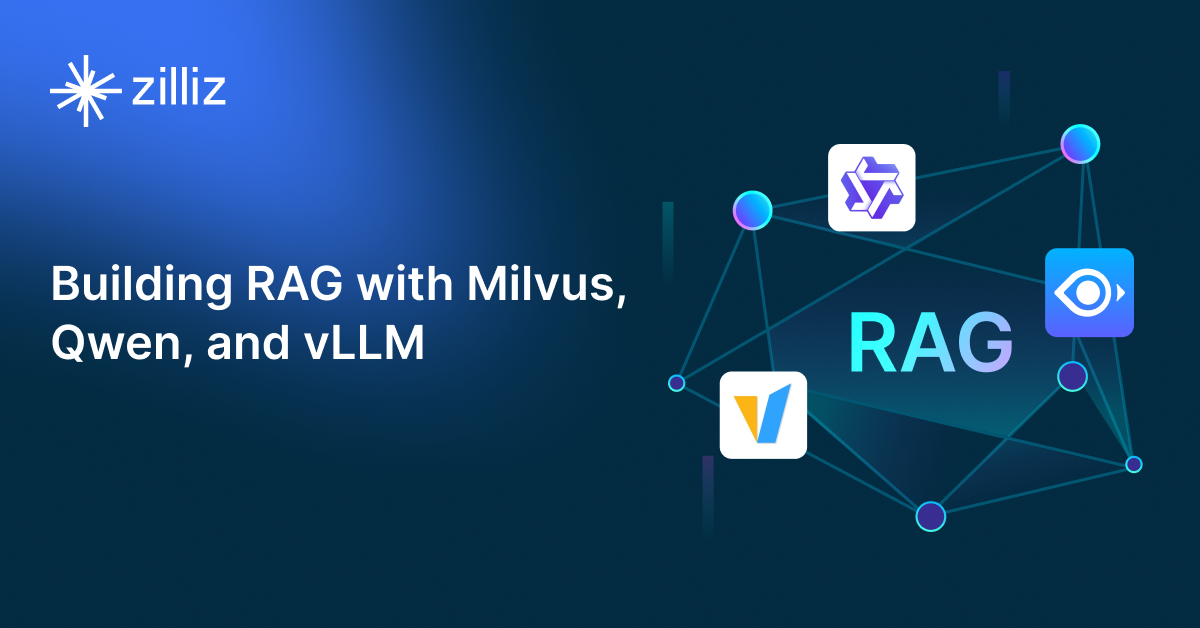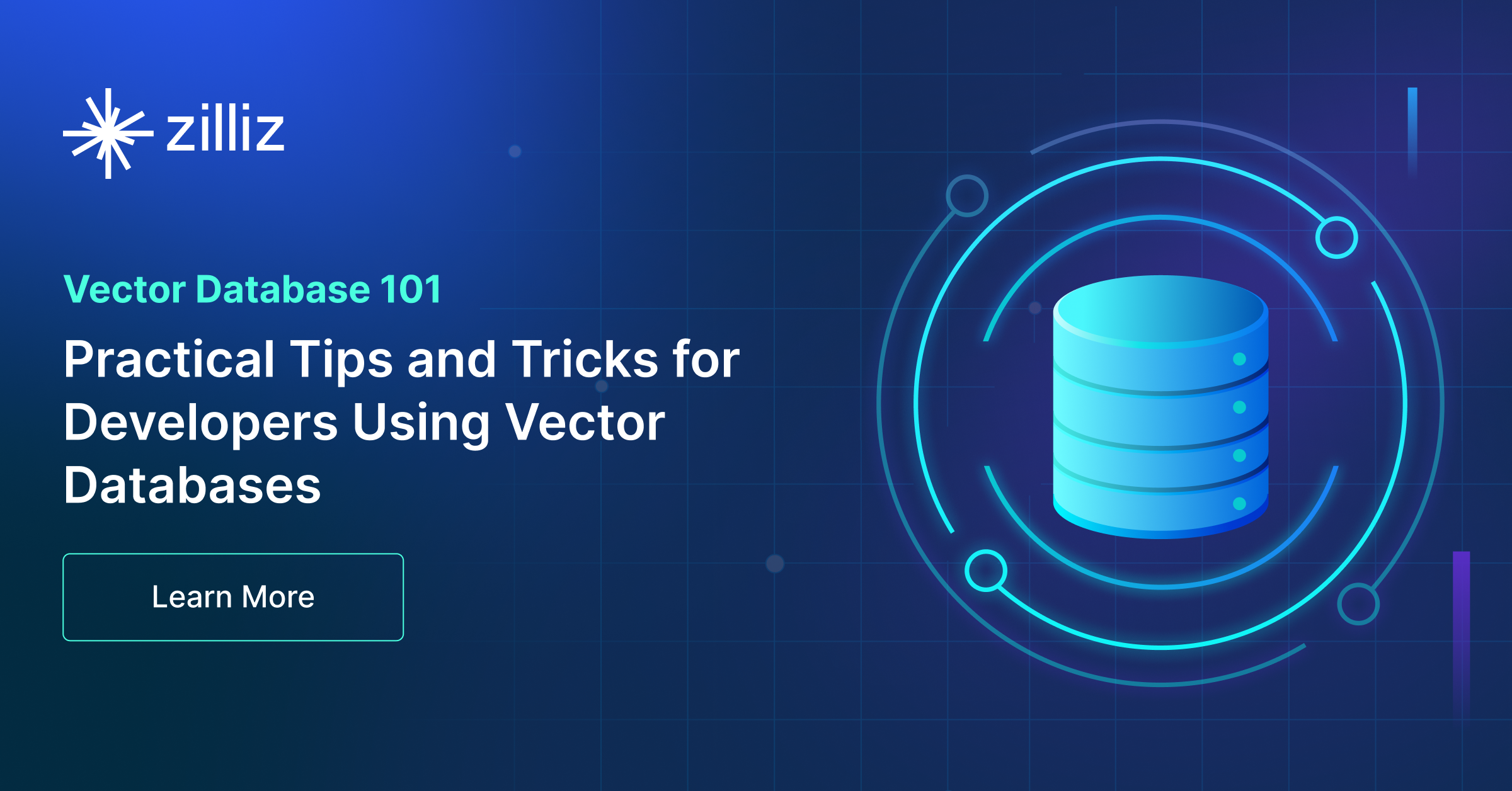Build RAG Chatbot with Haystack, Haystack In-memory store, Cohere Command, and Ollama mxbai-embed-large
Introduction to RAG
Retrieval-Augmented Generation (RAG) is a game-changer for GenAI applications, especially in conversational AI. It combines the power of pre-trained large language models (LLMs) like OpenAI’s GPT with external knowledge sources stored in vector databases such as Milvus and Zilliz Cloud, allowing for more accurate, contextually relevant, and up-to-date response generation. A RAG pipeline usually consists of four basic components: a vector database, an embedding model, an LLM, and a framework.
Key Components We'll Use for This RAG Chatbot
This tutorial shows you how to build a simple RAG chatbot in Python using the following components:
- Haystack: An open-source Python framework designed for building production-ready NLP applications, particularly question answering and semantic search systems. Haystack excels at retrieving information from large document collections through its modular architecture that combines retrieval and reader components. Ideal for developers creating search applications, chatbots, and knowledge management systems that require efficient document processing and accurate information extraction from unstructured text.
- Haystack in-memory store: a very simple, in-memory document store with no extra services or dependencies. It is great for experimenting with Haystack, and we do not recommend using it for production. If you want a much more scalable solution for your apps or even enterprise projects, we recommend using Zilliz Cloud, which is a fully managed vector database service built on the open-source Milvusand offers a free tier supporting up to 1 million vectors.)
- Cohere Command: A generative AI model designed for high-accuracy text generation and instruction-following, optimized for business applications. Strengths include coherent output, robust handling of complex prompts, and enterprise-grade reliability. Ideal for automating customer interactions, generating structured content (reports, emails), data extraction, and summarization, enhancing operational efficiency and scalability.
- Ollama mxbai-embed-large: A high-performance embedding model optimized for converting text into dense vector representations, excelling in semantic similarity tasks. It features multilingual support, efficient processing of long documents, and low-latency inference, making it ideal for semantic search, document clustering, content recommendation, and retrieval-augmented generation (RAG) pipelines.
By the end of this tutorial, you’ll have a functional chatbot capable of answering questions based on a custom knowledge base.
Note: Since we may use proprietary models in our tutorials, make sure you have the required API key beforehand.
Step 1: Install and Set Up Haystack
import os
import requests
from haystack import Pipeline
from haystack.components.converters import MarkdownToDocument
from haystack.components.preprocessors import DocumentSplitter
from haystack.components.writers import DocumentWriter
Step 2: Install and Set Up Cohere Command
To use Cohere models with Haystack for a RAG pipeline, you need to get a Cohere API Key first. You can write this key in:
- The
api_keyinit parameter using Secret API - The
COHERE_API_KEYenvironment variable (recommended)
Now, let's install and set up the Cohere model.
pip install cohere-haystack
from haystack_integrations.components.generators.cohere import CohereGenerator
generator = CohereGenerator(model="command")
Step 3: Install and Set Up Ollama mxbai-embed-large
pip install ollama-haystack
Make sure that you have a running Ollama model (either through a docker container, or locally hosted). No other configuration is necessary as Ollama has the embedding API built in.
from haystack import Document
from haystack_integrations.components.embedders.ollama import OllamaDocumentEmbedder
from haystack_integrations.components.embedders.ollama import OllamaTextEmbedder
text_embedder = OllamaTextEmbedder(model="mxbai-embed-large")
document_embedder = OllamaDocumentEmbedder(model="mxbai-embed-large")
Step 4: Install and Set Up Haystack In-memory store
from haystack.document_stores.in_memory import InMemoryDocumentStore
from haystack.components.retrievers import InMemoryEmbeddingRetriever
document_store = InMemoryDocumentStore()
retriever=InMemoryEmbeddingRetriever(document_store=document_store))
Step 5: Build a RAG Chatbot
Now that you’ve set up all components, let’s start to build a simple chatbot. We’ll use the Milvus introduction doc as a private knowledge base. You can replace it your own dataset to customize your RAG chatbot.
url = 'https://raw.githubusercontent.com/milvus-io/milvus-docs/refs/heads/v2.5.x/site/en/about/overview.md'
example_file = 'example_file.md'
response = requests.get(url)
with open(example_file, 'wb') as f:
f.write(response.content)
file_paths = [example_file] # You can replace it with your own file paths.
indexing_pipeline = Pipeline()
indexing_pipeline.add_component("converter", MarkdownToDocument())
indexing_pipeline.add_component("splitter", DocumentSplitter(split_by="sentence", split_length=2))
indexing_pipeline.add_component("embedder", document_embedder)
indexing_pipeline.add_component("writer", DocumentWriter(document_store))
indexing_pipeline.connect("converter", "splitter")
indexing_pipeline.connect("splitter", "embedder")
indexing_pipeline.connect("embedder", "writer")
indexing_pipeline.run({"converter": {"sources": file_paths}})
# print("Number of documents:", document_store.count_documents())
question = "What is Milvus?" # You can replace it with your own question.
retrieval_pipeline = Pipeline()
retrieval_pipeline.add_component("embedder", text_embedder)
retrieval_pipeline.add_component("retriever", retriever)
retrieval_pipeline.connect("embedder", "retriever")
retrieval_results = retrieval_pipeline.run({"embedder": {"text": question}})
# for doc in retrieval_results["retriever"]["documents"]:
# print(doc.content)
# print("-" * 10)
from haystack.utils import Secret
from haystack.components.builders import PromptBuilder
retriever=InMemoryEmbeddingRetriever(document_store=document_store)
text_embedder = OllamaTextEmbedder(model="mxbai-embed-large")
prompt_template = """Answer the following query based on the provided context. If the context does
not include an answer, reply with 'I don't know'.\n
Query: {{query}}
Documents:
{% for doc in documents %}
{{ doc.content }}
{% endfor %}
Answer:
"""
rag_pipeline = Pipeline()
rag_pipeline.add_component("text_embedder", text_embedder)
rag_pipeline.add_component("retriever", retriever)
rag_pipeline.add_component("prompt_builder", PromptBuilder(template=prompt_template))
rag_pipeline.add_component("generator", generator)
rag_pipeline.connect("text_embedder.embedding", "retriever.query_embedding")
rag_pipeline.connect("retriever.documents", "prompt_builder.documents")
rag_pipeline.connect("prompt_builder", "generator")
results = rag_pipeline.run({"text_embedder": {"text": question}, "prompt_builder": {"query": question},})
print('RAG answer:\n', results["generator"]["replies"][0])
Optimization Tips
As you build your RAG system, optimization is key to ensuring peak performance and efficiency. While setting up the components is an essential first step, fine-tuning each one will help you create a solution that works even better and scales seamlessly. In this section, we’ll share some practical tips for optimizing all these components, giving you the edge to build smarter, faster, and more responsive RAG applications.
Haystack optimization tips
To optimize Haystack in a RAG setup, ensure you use an efficient retriever like FAISS or Milvus for scalable and fast similarity searches. Fine-tune your document store settings, such as indexing strategies and storage backends, to balance speed and accuracy. Use batch processing for embedding generation to reduce latency and optimize API calls. Leverage Haystack's pipeline caching to avoid redundant computations, especially for frequently queried documents. Tune your reader model by selecting a lightweight yet accurate transformer-based model like DistilBERT to speed up response times. Implement query rewriting or filtering techniques to enhance retrieval quality, ensuring the most relevant documents are retrieved for generation. Finally, monitor system performance with Haystack’s built-in evaluation tools to iteratively refine your setup based on real-world query performance.
Haystack in-memory store optimization tips
Haystack in-memory store is just a very simple, in-memory document store with no extra services or dependencies. We recommend that you just experiment it with RAG pipeline within your Haystack framework, and we do not recommend using it for production. If you want a much more scalable solution for your apps or even enterprise projects, we recommend using Zilliz Cloud, which is a fully managed vector database service built on the open-source Milvusand offers a free tier supporting up to 1 million vectors
Cohere Command optimization tips
To optimize Cohere Command in a RAG setup, fine-tune parameters like temperature (lower for factual accuracy, higher for creativity) and top_p (narrow for precision). Use concise, structured input by chunking retrieved documents to fit context limits, and prepend clear instructions (e.g., "Answer using only the context"). Leverage Cohere’s built-in reranking to prioritize relevant passages. Regularly evaluate output quality with metrics like answer relevance and hallucination rates, and iteratively refine prompts and retrieval logic based on feedback.
Ollama mxbai-embed-large optimization tips
Optimize Ollama mxbai-embed-large in RAG by preprocessing input text: clean, normalize, and chunk documents into 256-512 token segments for balanced context. Use batch inference to parallelize embedding generation, reducing latency. Fine-tune the model on domain-specific data if labeled pairs are available. Cache frequent or static embeddings to avoid recomputation. Ensure hardware acceleration (e.g., CUDA) is enabled. Test cosine similarity thresholds for retrieval accuracy and adjust based on downstream tasks. Regularly update the vector database with fresh data to maintain relevance.
By implementing these tips across your components, you'll be able to enhance the performance and functionality of your RAG system, ensuring it’s optimized for both speed and accuracy. Keep testing, iterating, and refining your setup to stay ahead in the ever-evolving world of AI development.
RAG Cost Calculator: A Free Tool to Calculate Your Cost in Seconds
Estimating the cost of a Retrieval-Augmented Generation (RAG) pipeline involves analyzing expenses across vector storage, compute resources, and API usage. Key cost drivers include vector database queries, embedding generation, and LLM inference.
RAG Cost Calculator is a free tool that quickly estimates the cost of building a RAG pipeline, including chunking, embedding, vector storage/search, and LLM generation. It also helps you identify cost-saving opportunities and achieve up to 10x cost reduction on vector databases with the serverless option.
 Calculate your RAG cost
Calculate your RAG cost
What Have You Learned?
By now, you’ve seen firsthand how the magic of combining cutting-edge tools can bring a RAG system to life! You learned how Haystack, the flexible framework, acts as the backbone, seamlessly connecting every piece of the puzzle. Its intuitive pipelines let you orchestrate data flow, from ingesting documents to fetching answers. Then there’s the Haystack In-Memory Store, your lightweight but powerful vector database, which turbocharges retrieval by storing embeddings in RAM—perfect for rapid prototyping. You saw how Ollama’s mxbai-embed-large model transforms text into rich, meaningful embeddings, capturing the nuance of your data so the system understands exactly what to retrieve. And when it comes to generating answers, Cohere Command steps in with its LLM prowess, turning retrieved context into clear, human-like responses. Together, these tools form a RAG pipeline that’s not just functional but elegant—like watching a well-rehearsed orchestra perform!
But we didn’t stop there! You also picked up pro tips for optimization, like tweaking chunk sizes and filtering metadata to boost accuracy and speed. And that free RAG cost calculator? It’s your secret weapon for balancing performance and budget, ensuring your projects stay scalable. Imagine what’s next—customizing this pipeline for niche domains, adding multilingual support, or even blending it with real-time data streams. The skills you’ve gained aren’t just theoretical; they’re a launchpad. So go ahead—experiment, iterate, and innovate. Build a chatbot that wows users, a research assistant that digs deeper, or something entirely new. The tools are in your hands, and the possibilities? They’re endless. Your RAG journey is just beginning, and I can’t wait to see what you create! 🚀
Further Resources
🌟 In addition to this RAG tutorial, unleash your full potential with these incredible resources to level up your RAG skills.
- How to Build a Multimodal RAG | Documentation
- How to Enhance the Performance of Your RAG Pipeline
- Graph RAG with Milvus | Documentation
- How to Evaluate RAG Applications - Zilliz Learn
- Generative AI Resource Hub | Zilliz
We'd Love to Hear What You Think!
We’d love to hear your thoughts! 🌟 Leave your questions or comments below or join our vibrant Milvus Discord community to share your experiences, ask questions, or connect with thousands of AI enthusiasts. Your journey matters to us!
If you like this tutorial, show your support by giving our Milvus GitHub repo a star ⭐—it means the world to us and inspires us to keep creating! 💖
- Introduction to RAG
- Key Components We'll Use for This RAG Chatbot
- Step 1: Install and Set Up Haystack
- Step 2: Install and Set Up Cohere Command
- Step 3: Install and Set Up Ollama mxbai-embed-large
- Step 4: Install and Set Up Haystack In-memory store
- Step 5: Build a RAG Chatbot
- Optimization Tips
- RAG Cost Calculator: A Free Tool to Calculate Your Cost in Seconds
- What Have You Learned?
- Further Resources
- We'd Love to Hear What You Think!
Content
Vector Database at Scale
Zilliz Cloud is a fully-managed vector database built for scale, perfect for your RAG apps.
Try Zilliz Cloud for Free


